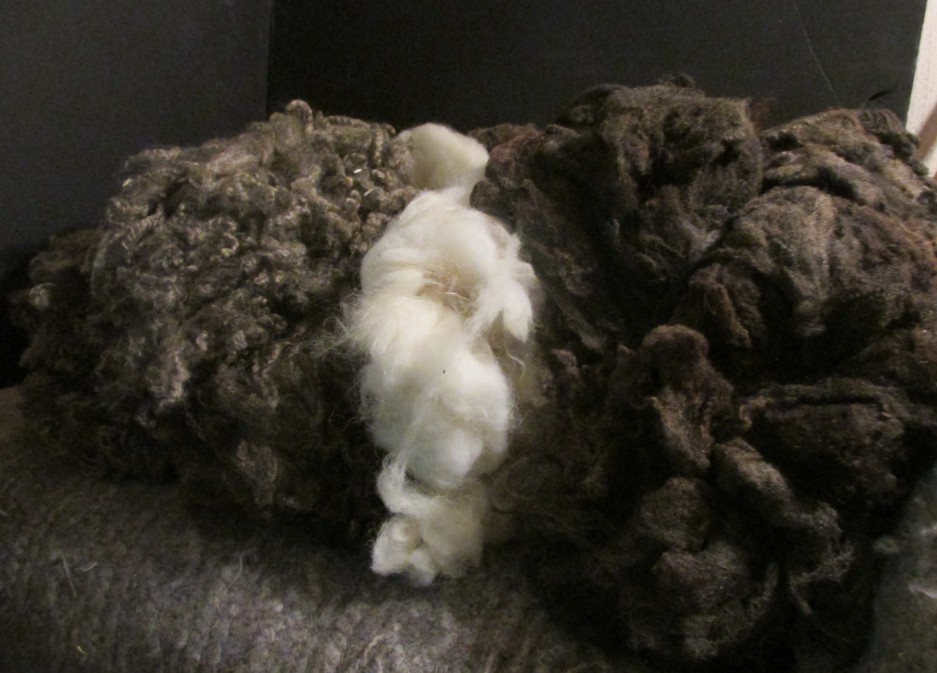FIBERUARY NAAILBINDING BY KATHERINE JOHNSON
In September 2009, I opened my new issue of Piecework Magazine to read a re-print of a 1994 article by Linda Ligon called “The Ubiquitous Loop.” That was my introduction to simple looping, which became a gateway into the broader world of single needle work.
Simple looping is generally agreed to be the simplest form of single-needle fabric creation. The structure of it looks like this:
And here’s a piece I made in simple looping using jute garden twine (it’s upside down as compared to the drawing of the structure above):

It’s made with one needle (or no needle at all if your fiber is stiff and pointy enough to be worked by itself), and the movements are akin to hand sewing. In fact, the movements are exactly the same as for the buttonhole stitch in sewing or embroidery, only done in the air instead of in a piece of solid fabric.
And with this one “airy gesture,” as Ligon calls it, we span the millennia of human technology:
- A fragment from Northern Germany about 7000 BCE, and net fragments from the Late Stone Age, Bronze Age, and Iron Age in Scandinavia and other northern European sites,
- Fragments and a pouch or hat in a fancy openwork pattern from the desert southwest of the Dead Sea in about 6500 BCE,
- A shirt from the first millennium BCE in Peru,
- Sandals and bags from the first millennium CE in the American Southwest.
- From historical accounts, baskets made by First Nations Athabascan-speaking people in northwestern Canada, and
- Today in Papua New Guinea, Bolivia, Ecuador, and among the Hopi people, loop upon loop builds practical bucket-shaped bags, large decorative carrying bags, and gourd covers for ceremonial use.
Simple looping has been used for sturdy objects, like baskets, bags, and shoes. It has been used to create decorative edgings on larger textiles. It can be made simple and dense, or with skipped stitches and contours for an open, decorative fabric. Like crochet, it is endlessly organic and flexible. It’s very easy to create a fabric around an object, shaping as you go, to make a “sleeve” that was made to fit.
After reading the short article by Linda Ligon and then completing the tiny pouch from the related project, I was hooked. (If you’re interested in that pattern by Robin Taylor Dougherty, which includes a basic how-to on simple looping, you can find it on the Interweave Press website at http://www.interweave.com/article/needlework/a-treasure-pouch-in-simple-looping/). I made a couple of other pouches at different gauges, following the same basic idea. Then I found Donna Kallner (you can find her too online at http://www.donnakallnerfiberart.com/looping/about-looping/), bought her book, and worked through many of the projects in it. I fell deep into the rabbit hole of single needle work, adding traditional northern European needle binding (aka naalbinding, just to offer one possible spelling) to my list of fiber habits. Other single needle techniques include netting, needle lace, and (if you want to follow me right off the edge), shuttle tatting.
Give it a try. Maybe you’ll fall in love with this ancient, organic fabric-making approach. Just one needle and a couple arms’ lengths of yarn will connect you with some of humankind’s earliest technology
Katherine will be at Sheep and Shawl on Sunday March 5th.lecturing on Naailbinding and will be giving a one day work shop later in March. Check out the Sheep and Shawl website for more details.
